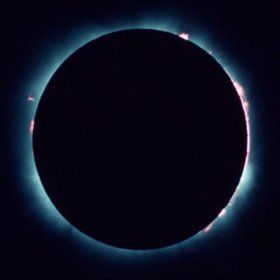

#Sun corona thickness how to#
Students can learn more about the potentialy harmful effects of the sun with the associated activity UV Radiation: Sunscreen SPF Experiment by investigating the harmful effects of the Sun's UV rays and how to protect themselves from their intensity and harmful effects. Humans can only view the corona with a naked eye during a solar eclipse-that is, without the use of a telescope otherwise, permanent eye damage may occur. The corona is the hottest and outermost layer of the atmosphere. The next layer out is the chromosphere, which, in terms of temperature, is hotter than the photosphere but cooler than the corona. The only visible layer that can be seen with the naked eye is the photosphere. The Sun has an atmosphere that is made up of three layers: the photosphere, chromosphere, and corona. NASA employs many types of engineers in its space program: aerospace engineers design airplanes and spacecraft (with the help of astronautical engineers who work specifically with spacecraft) mechanical and electrical engineers design and build various other components of spacecraft including robotic arms, the computer system (which computer science engineers help program), as well as other vital parts of spacecraft and civil and chemical engineers play a role in aerospace development, from designing and building the launch pad to determining what kind and how much of fuel to use. Although the sun is over 92 million miles from the Earth, these irregularities can affect us here on Earth through radiation (the only type of heat transfer that can travel through a vacuum).Įngineers play a major role in gathering information about space, and especially the Sun.

NASA watches the Sun closely, especially for sunspots, solar flares, and coronal mass ejections (CMEs). It is about 14 million degrees Celsius at its center. The Sun supplies all of our energy, and without it, we would be colder and darker than Pluto. The Sun is so large that a million Earths could fit inside it. The Sun is a huge, hot, explosive mass that is the center of our solar system. The significance of a phenomenon is dependent on the scale, proportion, and quantity at which it occurs. The star called the sun is changing and will burn out over a lifespan of approximately 10 billion years.Īlignment agreement: Thanks for your feedback! Nuclear Fusion processes in the center of the sun release the energy that ultimately reaches Earth as radiation. This lesson focuses on the following Three Dimensional Learning aspects of NGSS:ĭevelop a model based on evidence to illustrate the relationships between systems or between components of a system.Īlignment agreement: Thanks for your feedback! Develop a model based on evidence to illustrate the life span of the sun and the role of nuclear fusion in the sun's core to release energy that eventually reaches Earth in the form of radiation.Ĭlick to view other curriculum aligned to this Performance Expectation


 0 kommentar(er)
0 kommentar(er)
